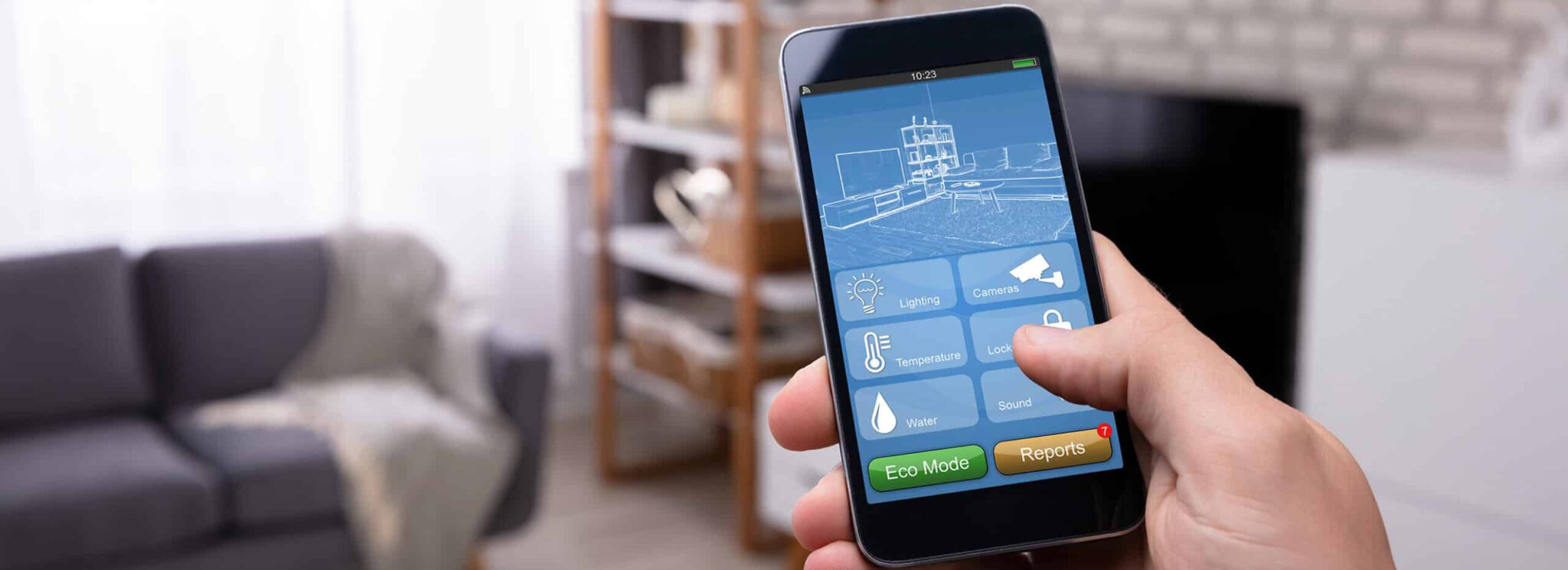As residential property management enters a new decade, it leaves many thinking about its future. How will apartments and multi-family residential evolve in the ’20s?
A big part of that is technology. New technology comes out faster than the industry can keep up. “The overall trend in multi-family tech is ‘digital transformation’ meaning the evolution of manual overhead into more efficient operations, elimination of paper, and adoption of frictionless processes,” says Berkadia EVP and Chief Innovation Officer Darren Wesemann in Credtech.
Why should property managers pay attention to trends? Often based on solid data, trends signal the direction an industry will go. The early adopters who make sound decisions based on trends will more likely leap ahead of their competitors. As Wesemann explains, implementing the right technology cuts tedious paperwork and speeds processes.
Even the opening line in pwc and Urban Land Institute’s “Emerging Trends in Real Estate” says it all: “‘We’ve always done it this way’ doesn’t cut it in real estate anymore. We need to find the best way to do it.”
The report explains the purpose of trends. Trends should provide information using carefully vetted resources to allow the business to make decisions with confidence. “If you have thoughtfully assessed your resources, been careful about your objectives, and lined up the physical, financial, and human assets needed for success—well, your approach should have some staying power,” writes pwc and ULI. The report goes on to describe trends as dynamic
Technology is not the only trend you can expect to see in this decade. Here are the five residential property trends worth investigating. The first one is sure to please you.
1. Apartment Rental Is in High Demand
Apartment demand has climbed 11 percent from a year ago and has reached a five-year high according to this CNBC story
citing data from RealPage. Apartment construction is responding well to high demand considering it’s close to a 30-year high.
Despite the higher demand leading to increasing rent prices, more than 80 percent of renters believe renting is more affordable than owning per a Freddie Mac survey. Another indicator is falling home sales due to low availability, rising interest rates, and higher prices.
Millennials (ages 23 to 38) want apartments. They hope to own a home. However, they’re putting it off until they contend with student loans. Many are early in their careers in which their take-home pay and debts delay their journey to homeownership.
“Emerging Trends in Real Estate” indicates there will be 1 million new rentals in the year ahead. It’s all about — as the real estate business loves to say — “Location, location, location.” Rental need is the greatest in the largest U.S. cities including Austin, Raleigh-Durham, Nashville, Charlotte, Boston, Dallas / Fort Worth, Washington, D.C., New York City, Houston, and Los Angeles.
2. Apartment Amenities Play a Large Role in Attracting and Keeping Tenants
When you visit a hotel that has you talking about it when you get home, what is it you’re talking about? The great customer service? The free breakfast buffet? The ability to unlock the room door with your phone? The free secure wi-fi? The free shuttle service to and from the airport? The fact they allow pets?
It’s most likely the amenities that have people talking about their hotel stay. Now that’s spilling over to apartments and multi-family residential housing. Tenants want niceties. Apartment amenities are no longer a nice-to-have, but a must-have.
They like anything that eases their lives. This could be an onsite grocery store or grocery delivery. It could be cleaning services, ridesharing, and a washer and dryer in the unit. They also want to bring their pets and have access to pet conveniences such as dog walking and bathing services. Fitness options are big too. They like pools and a fitness center
with exercise machines, free weights, and weight machines.
The fifth generation of wireless, known as 5G, is coming. News reports say 5G has slowly started rolling out in many countries. Residents want faster downloads, less lag, and seamless integration of applications and technologies. Considering a fast, reliable connection is a top requirement for tenants, it’ll be critical for multi-family residential properties to implement it as soon as possible.
The 2020 NMHC and Kingsley Associates Renter Preferences Report is based on a survey of more than 370,000 apartment renters in 5,3000 communities. One of the more interesting findings is that 55 percent said they’d want an onsite business center. That may be why soundproof walls and noise-reducing features are top feature requests.
3. Smart apartments continue rising
To distinguish smart apartments from other technologies, it’s an apartment that comes with smart home technology. In some cases, smart technology can connect to the resident’s device or voice assistant.
Homebase.ai clarifies that smart apartments contain three traits:
- Smart amenities
- Smart locks:
Keyless entry via mobile app. Residents can unlock their door remotely to let in a dog walker or housecleaner. - Smart lighting:
Remotely control lights through an app. - Smart thermostat:
Remotely control the thermostat through an app and set it to automatically adjust based on time of day. - Resident app: Pay for rent, utilities, and other bills via the app and communicate with property manager and residents.
- Wi-Fi: Tenants order the service through the property manager instead of a carrier.
- Access control:
Provides security by tracking who enters and exits the property. - Connectivity:
Uses an IoT network to connect devices, residents, building systems like HVAC, and management. - Community management:
Allows tenants and property managers to communicate with each other. It could have features such as an event calendar, instant messaging, group forums, and on-demand property services requesting house cleaning or dog walking services.
- Smart locks:
A growing trend is a desire for voice-activated technology like Amazon’s Alexa or Google Home. The NMHC/Kingsley Associates Apartment Resident Preferences Report has found that one-third of those surveyed already own one, and 43 percent were interested in or won’t rent from a place without a voice-activated virtual assistant.
The oldest members of Gen Z have either recently graduated from college or worked for a few years since their high school graduation. They’re ready to go on their own. This is the first generation to be born into technology and the internet. Thus, they expect their residence to offer smart home and smart apartment technology.
A Schlage survey has found that almost 9 out of every 10 millennials are willing to pay more for a smart apartment. Don’t rule out the Baby Boomers. It appears than 65 percent of Baby Boomers will pay more for smart apartments. More than 60 percent claim they will move out of an apartment that lacks advanced security.
4. The Growing Number of Remote Workers
Residents want more amenities. And that’s because many of them may work remotely. This means they stay home more and want more conveniences at home. CNBC references a study from IWG that reveals 7 out of 10 people around the world work remotely at least once a week. Gallup’s “State of the American Workplace” survey finds that 43 percent of respondents work remotely some of the time, an increase from the 34 percent in 2012.
Global Workplace Analytics has discovered that half of the U.S. workforce has a job that lends itself to telecommuting at least some of the time. That’s not surprising considering that compared to five years ago, 40 percent more employers in America offer flexible workspace options. Even Fortune 1000 companies see the value as their employees do not come in the office 50 to 60 percent of the time.
Since 80 to 90 percent of the U.S. workforce wants to work remotely at least part of the time, it’s likely more companies will allow it. That’s why apartment amenities and security systems are more critical than ever. An apartment property needs to have high-speed internet with pre-installed Wi-Fi and reliable connectivity.
5. High-Tech Security Systems Remain a Top Requirement
Baby Boomers and Gen Xers want apartments with video surveillance and apartment security systems according to the National Apartment Association. Residents want peace of mind knowing their home is safe. An Assurant survey of renters reports that over half will pay more for security features.
Remote video surveillance systems can do more than watch for crime. They can spot and report safety hazards. This is helpful for properties who serve older residents who use a walker, wheelchairs, or canes.
The Integration of Apartment Trends
Many factors affect residential property management trends. Apartments are no longer just for the younger generation. Baby Boomers and Gen Xers want to downsize and have fewer housing management responsibilities. Debts and the rising unaffordability of homes drive Generations Y and Z to choose multi-family residential living.
Notice the trends cross-cross each other. Some of the drivers for the high demand for apartment rental are the amenities, remote working, security, and technology. Security and technology like video surveillance and smart apartments are considered amenities. People working from their apartments need a dependable fast connection to get work done.
All these together provide residents with security and all the desired services onsite. Smart apartments allow them to manage their units from wherever they are.
To help your property stand out from other properties, you want to ensure you offer the right apartment security. With live video surveillance, you’ll get a fast ROI while maximizing the security your tenants require. To learn more about your options for apartment security, please contact us.

